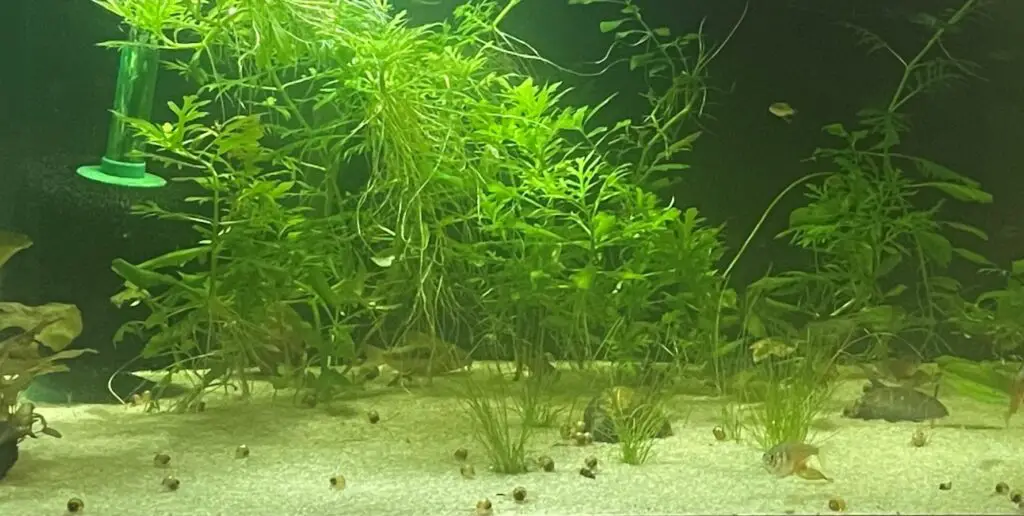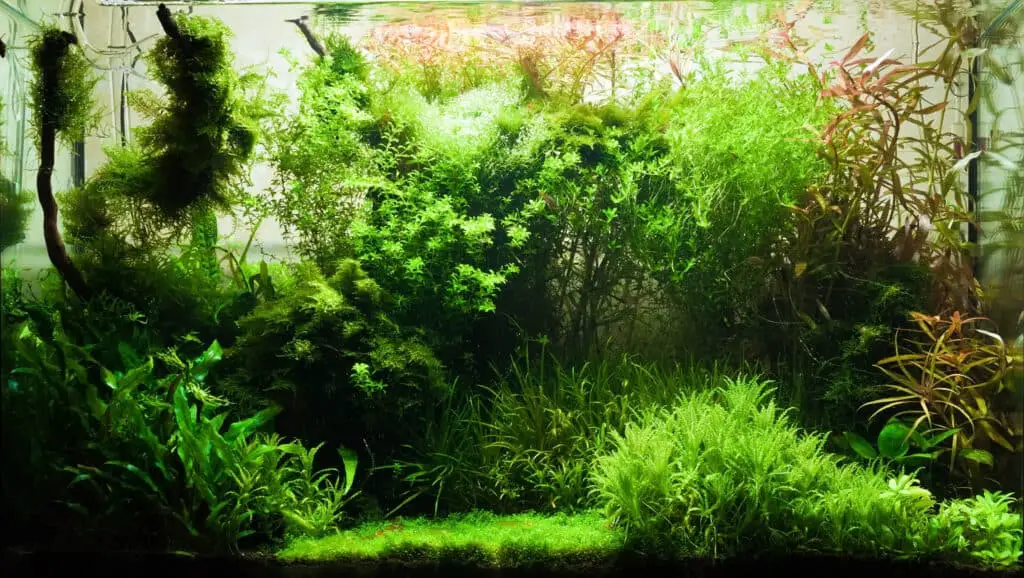
Aquariums allow us to observe a variety of aquatic life right in our homes. Fish keepers often enjoy adding different species, and one common choice is aquatic snails. Even though snails can be amazing additions to a fish tank, there are several drawbacks to consider, before their introduction.
Six drawbacks to adding snails to your aquarium are overpopulation, algae control limitations, waste production, aesthetic concerns, potential harm to living plants, compatibility issues, and limited species selection.
Today, we will take a look at the potential downsides of adding snails to your fish tank.

1. Overpopulation
A major concern associated with snails in a fish tank is their potential to reproduce rapidly.
Many snail species are prolific breeders, and under good conditions, their populations can explode.
This explosive population growth can lead to overcrowding and result in a less visually pleasing and harmonious tank environment.
The overabundance of snails may have them competing with fish for resources, like food and overall tank space, causing stress to both the fish and snails.
2. Waste Production
Snails, like all living creatures, create waste.
In a closed ecosystem, like a fish tank, excessive snail populations can contribute to an increase in bio-load, which takes into account the total amount of waste produced by all living creatures in the aquarium.
Elevated bio-load can lead to bad water quality and an increased risk of ammonia and nitrite spikes, which can harm both fish and other inhabitants.
This can make the maintenance of water quality more challenging, requiring more frequent water changes and additional filtration.
3. Algae Control Limitations
One of the primary reasons the choice is made to introduce snails into a fish tank is to control algae growth.
While some snail species are efficient algae eaters, their effectiveness can vary depending on the species and the type of algae present in the tank.
Some snails may prefer certain types of algae over others, leaving specific algae untouched.

4. Aesthetic Concerns
While beauty is subjective, some aquarists may find that snails detract from the aesthetic appeal of their aquarium.
Snails come in various shapes, sizes, and colors; and their presence can sometimes clash with the desired visual theme of the tank.
Additionally, if the snail populations become too large, their constant movement and grazing can disrupt the carefully arranged decor and plants within one’s tank.
5. Invasive Species
Depending on the species of snail you choose, that introduction to your aquarium may inadvertently lead to you introducing an invasive species.
Some snail species are notorious for their ability to adapt and reproduce rapidly in new and varying environments.
In these circumstances, these snails can establish themselves in your tank, they can outcompete the native snails and other aquatic species, disrupting the balance in your tank.
6. Compatibility Issues
Not all fish species are compatible with snails. Some aggressive or larger fish, such as Clown Loaches, and Pufferfish, may see snails as a potential food source and attempt to prey on them.
Other species, like Betta fish, though not large enough to eat most snail species, tend to nip at snails.
Another case to consider is compatibility between snails if you are going to have multiple types.
For instance, the Assassin snail will eat other small snail species.
These cases can lead to stress and injury for the snails, as well as potential harm to the fish if they try to eat or ingest the snails, or their shells.
Final Thoughts
Snails can offer benefits to a fish tank, such as unique aesthetic appeal, and some algae control, it’s crucial though to consider the potential drawbacks before introducing them to your tank’s ecosystem.
Overpopulation, algae control limitations, waste production, aesthetic concerns, invasive species risks, and compatibility issues are all factors that a fish keeper should weigh when making the consideration for adding snails to their tank.
Before making the introduction, be sure to research the specific snail species being considered, taking note of their behavior to determine whether they are a suitable addition.
Proper planning and maintenance can help you maintain a balanced, and thriving tank environment for both your fish and any snails that you choose to include.
